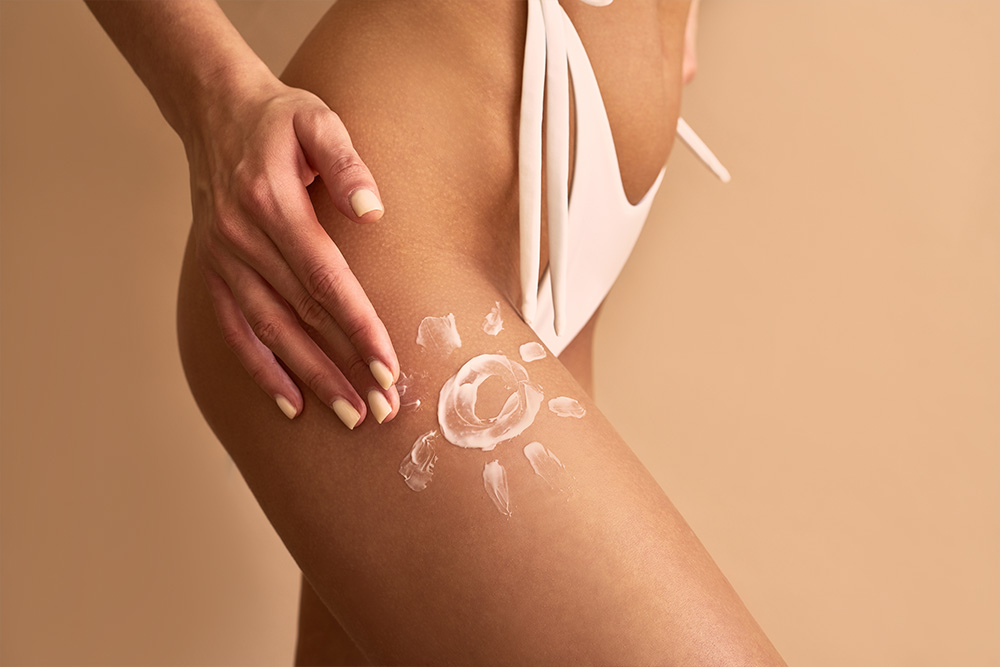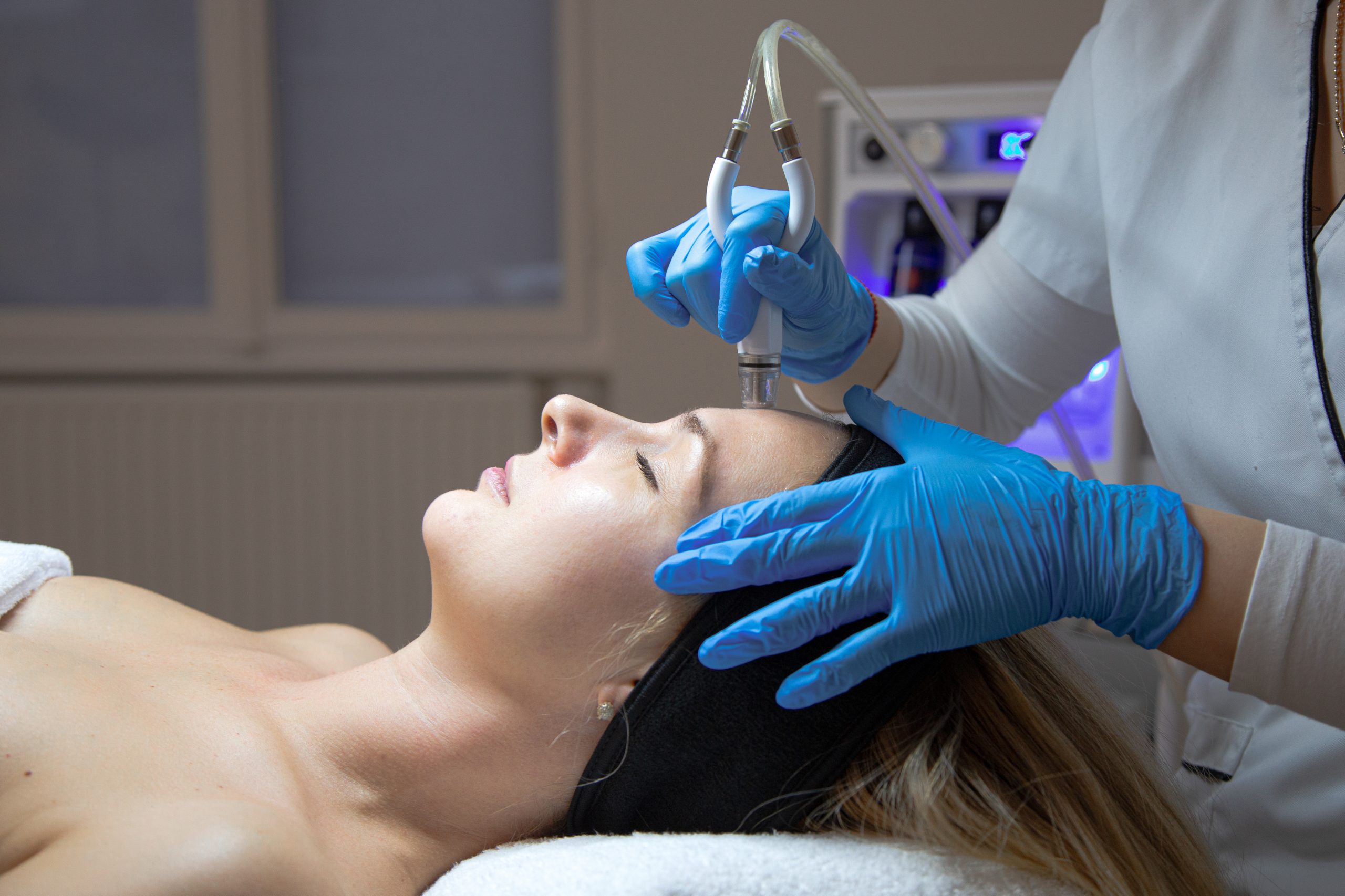With the onset of summer, we hear this question more and more often, both from long-term patients of the clinic and from newcomers. Some of them are thinking that this procedure is not done in the warmer months. Others are in a hurry to make an appointment because they have heard or read exactly the opposite. In the ocean of conflicting information, it’s probably difficult to know where the myths end and where the facts begin. So, we will tell you how lasers work, what are the capabilities of the latest generation of systems and what are the safe steps to get rid of unwanted hair in the hottest season.
Table of contents
- Laser hair removal in summer: is that possible?
- When should laser hair removal be performed?
- Laser hair removal after solarium
- Laser hair removal on dark skin
Laser hair removal in summer: is that possible?
Just a few years ago, this was not a myth, but reality. With the first laser systems, even with a light tan, it was difficult to refine the radiation on the skin – the darker the epidermis, the more difficult it was for the energy to target the melanin in the hair follicle. Therefore, its destruction became less effective. I’ll give you an example. Imagine a white sheet with small grey dots. It’s easy to show them off, isn’t it? But what if the sheet of paper and the dots are the same colour? Then the task becomes almost impossible, as well as successful summer sessions.
Similarly, the first generation of lasers did not detect hair follicles well in darker skin while often affecting the surrounding tissue. Therefore, we dermatologists insisted that hair removal should be carried out in late autumn and winter when the epidermis is light. Only then was the end result good. With the development of technology and the advent of the new generation of systems, the opportunities for energy processing have increased dramatically, and laser procedures have become possible in the summer. Of course, it is also important to observe certain conditions.
When should laser hair removal be performed?
For excellent results, do not tan 1-2 weeks before and 1-2 weeks after the procedure. It’s not just about walking on the beach. In summer, after hair removal, we have to adjust our clothes. And remember: no professional will agree to perform this procedure less than 72 hours after you’ve been exposed to the sun, due to the risk of burns. Whenever you decide to have laser hair removal, your skin should not be exposed to the sun so quickly after. The beautician will surely ask you about your habits and intentions. They will also assess the current condition of your skin. We’ve had cases where clients tried to get us to agree to a session after their summer holiday. That is very dangerous. We remind you that the results of these manipulations can be unsatisfied. Even if you postpone the session to a later date, this will not affect your end goals. Therefore, if it is summer, then you can safely plan the next manipulation when the skin is no longer tanned.

Laser hair removal after solarium
The combination of a fresh tan and laser hair removal is simply not recommended. It doesn’t matter whether the tan is achieved in the classic way by exposure to the sun or by a solarium. Exactly the same rules apply here as in the above case. Specialists refuse to perform procedures on clients who have visited a solarium in the past two weeks. You should also not visit the solar studio for two weeks after a laser treatment. The other popular method of getting a bronze tan, self-tan, should also be used with caution. You can use them between your visits to the clinic, but the effects must wear off by the time you come for a procedure. To simplify all this, for safe and effective laser hair removal, your skin should be its natural colour, even in summer. This is one of the most important prerequisites for the quality of therapy.
Laser hair removal on dark skin
Suppose your complexion is slowly fading or you are born with darker skin. Then, is it possible to have laser hair removal in summer or any other time of the year?
Our answer is again “Yes!”
Modern generation systems such as Duetto MT EVO work safely on darker epidermis as the dermatologist can set the right amount of energy (usually less than on tanned skin). This completely avoids the risks of hyper- or hypopigmentation. Check carefully what class of equipment your chosen clinic has and whether the energy it delivers is suitable for your skin color hair. For us, the most efficient and absolutely safest are the state-of-the-art systems with mixed radiation, which can work with a wavelength of 1064nm as well as 755nm. They can also be used to remove hair of different thicknesses and colours.
In conclusion, we can confidently say that laser hair removal is quite possible in summer. The main requirements are not to collect active tan during the procedures and to trust an experienced cosmetologist. They select a proven device that meets your needs and the right settings. Also, the specialist in treating the area before and after the manipulation will provide you with valuable advice that you should follow like for example the use of sunscreens with a high SPF. Only then will the Smooth Skin mission succeed. If you are interested in the risks of laser hair removal, check out our other blog articles on the subject. You will also find a lot of useful information and answers to questions about this type of hair removal. You will learn how to choose a reliable specialist and place, whether there are any complaints and what to expect.



